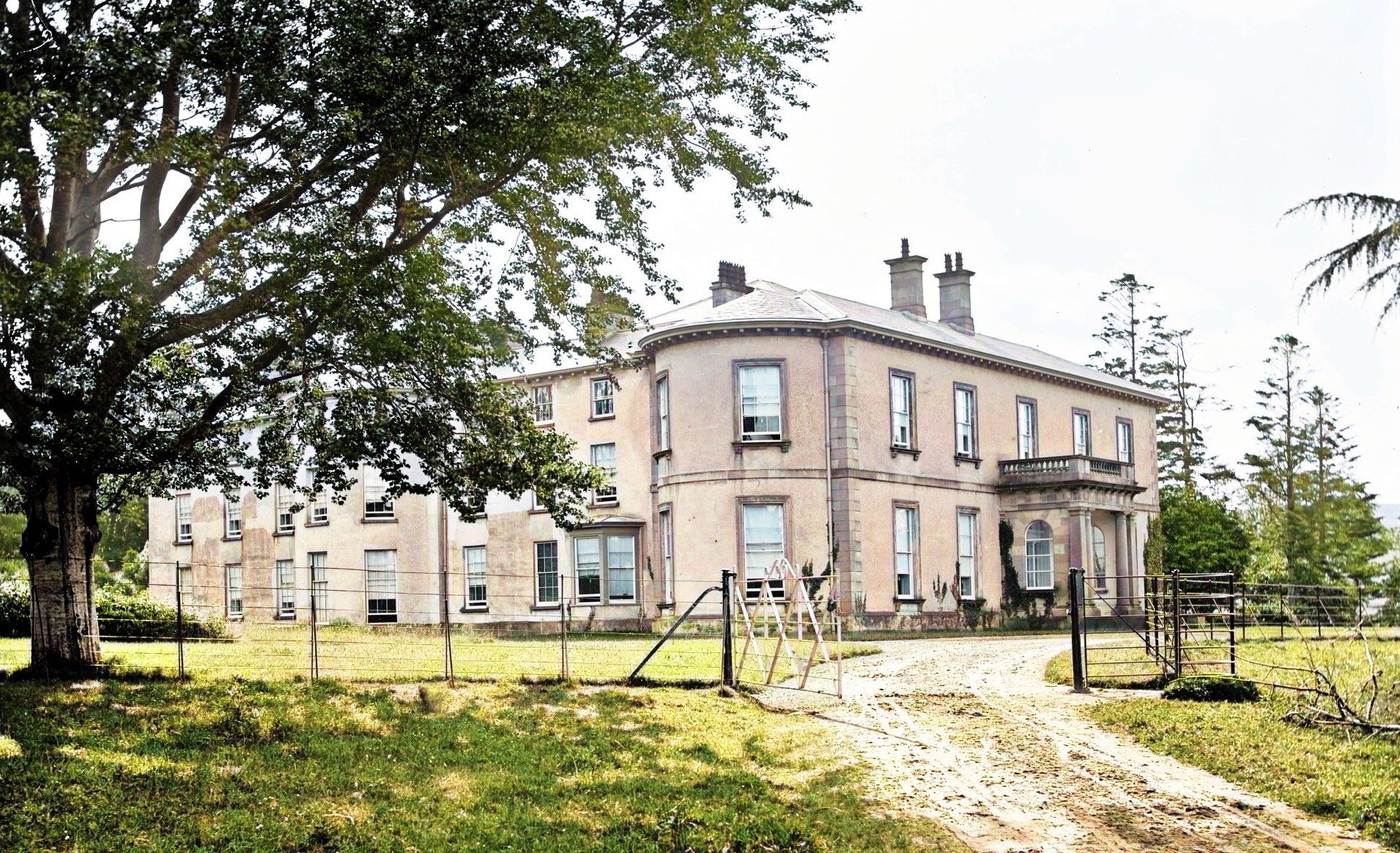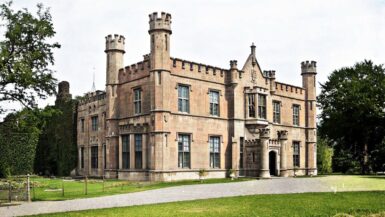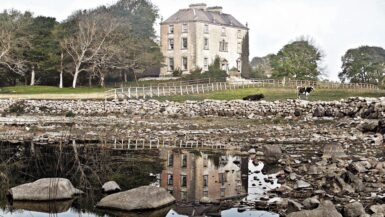Nestled in the verdant landscape of County Donegal, Rockhill House and Estate stands as a testament to Ireland’s rich historical tapestry. This grand country house, with its roots stretching back to the 17th century, has witnessed the ebb and flow of Irish history, from the plantation era to modern times. Today, Rockhill House is celebrated not only for its architectural grandeur and historical significance but also as a beacon of hospitality, offering guests a unique blend of timeless Irish charm and luxurious modern comfort. The estate, once a military barracks and a witness to the tumults of civil strife, has been transformed into a haven of tranquility and beauty, catering to those seeking an escape into Ireland’s majestic countryside. Its current state, as a meticulously restored country house, provides a gateway to the past, while offering experiences and amenities that meet the highest standards of contemporary luxury.
Contents
The Early Years: Origins and Ownership
The Plantation of Ulster and the Original Grant of Lands
The history of Rockhill House begins with the Plantation of Ulster, a pivotal event in Irish history that reshaped the cultural and demographic landscape of the region. In the early 17th century, English and Scottish settlers were granted lands in Ulster, including the area around what would become Rockhill House. Sir Thomas Coach, an English Knight, was awarded 1,500 acres on the south side of the River Swilly, a tract of land that encompassed the future site of Rockhill House. This initial grant laid the groundwork for the estate’s development, marking the beginning of its storied history.
Transition of Ownership from the Coach Family to the Pratts and then to the Chambers Family
Over the ensuing decades, the ownership of Rockhill transitioned through marriages and inheritances, reflecting the changing fortunes and alliances of the time. The Coach family’s estate eventually passed to the Pratt family through matrimonial ties, further entrenching the estate’s significance in the region’s social and economic fabric. The Pratts, a prominent family in their own right, held the lands until the late 17th century when John Chambers was granted the lands of Rockhill. The Chambers family, taking the mantle in the waning years of the 1600s, constructed a manor house on their new estate, laying the foundation for the Rockhill House we know today.
This transition of ownership and the early development of the estate highlight Rockhill’s importance as a nexus of cultural, social, and economic life in Donegal. From its origins in the Plantation of Ulster to the establishment of the manor house by the Chambers family, Rockhill House has been intricately linked to the broader narratives of Irish history, setting the stage for its evolution into a symbol of heritage and hospitality.
Architectural Evolution
The Construction of the Manor House by the Chambers Family
The architectural journey of Rockhill House commenced with the Chambers family, who were instrumental in establishing the estate’s initial physical presence. In the late 17th century, they constructed a manor house that served as the cornerstone for the future development of the estate. This early structure embodied the architectural ideals of its time, representing a tangible connection to the social standing and aspirations of the Chambers family. Over the years, this original manor house would undergo transformations that reflected the changing tastes and requirements of its occupants.
Major Renovations and Expansions by John Vandeleur Stewart and Subsequent Owners
The estate entered a significant new phase under the ownership of John Vandeleur Stewart in the early 19th century. Stewart, recognizing the potential of the property, engaged the services of famed Dublin architect John Hargrave to undertake a radical extension and remodeling of the house. The result was a grand residence that married the Georgian architectural style with the natural beauty of its surroundings, enhancing the estate’s allure.
Subsequent owners built upon Stewart and Hargrave’s vision, further expanding and renovating the house to suit evolving styles and preferences. These changes not only added to the house’s aesthetic and functional appeal but also served to reflect the social and historical milieu of each period. The architectural evolution of Rockhill House, from its origins as a manor house to a splendid Georgian estate, stands as a testament to the layers of history and identity that it embodies.
Military and Civil Use
Use of Rockhill House during the Irish Civil War
Rockhill House’s strategic significance came to the fore during the Irish Civil War when it was occupied by Anti-Treaty forces. This period marked a tumultuous chapter in the estate’s history, as it became embroiled in the national conflict that defined early 20th-century Ireland. The house’s occupation and the subsequent engagement with Pro-Treaty forces underscored the broader societal and political upheavals of the time, embedding Rockhill House within the narrative of the country’s struggle for identity and governance.
Transition to a Military Barracks and Its Role in Local and National Defense
Following its civil war involvement, Rockhill House transitioned to a more formal military role. In the mid-20th century, it was repurposed as a military barracks, serving as a base for the Irish Defence Forces. This new role highlighted the strategic importance of the estate, not just as a military installation but as a symbol of national security and sovereignty. The barracks housed various military units over the years, playing a key role in local and national defense initiatives.
The transformation of Rockhill House from a private residence to a military barracks, and eventually to its current incarnation, reflects the estate’s adaptive reuse over time. Each phase of its military and civil use has added a layer to its rich historical tapestry, contributing to the complex narrative that makes Rockhill House a unique and enduring symbol of Irish heritage.
The House as a Community Hub
Educational and Social Uses of the Estate Over the Years
Rockhill House has long been a focal point for the community, serving various educational and social purposes throughout its history. After the departure of military operations, parts of the estate were utilized as a preparatory Irish college, contributing to the cultural and linguistic revival efforts in Ireland. This educational use underscored the estate’s role in nurturing the country’s heritage and providing a space for learning and growth. Beyond education, Rockhill House has hosted community events, gatherings, and celebrations, acting as a central hub where the local community could come together, reinforcing its place in the social fabric of Donegal.
Impact on the Local Community, Including Economic and Social Contributions
The presence of Rockhill House and Estate has significantly impacted the local community, both economically and socially. As a military barracks, it provided employment opportunities and injected economic vitality into the area. The estate’s transformation into a hospitality venue continues this tradition by contributing to local tourism and offering employment. Socially, Rockhill has been a symbol of continuity and community identity, hosting events that bring people together and fostering a sense of belonging and pride among residents.
Challenges and Changes
The Impact of the 2008 Economic Downturn and the Closure of the Barracks
The global financial crisis of 2008 had far-reaching effects, leading to budget cuts and austerity measures across Ireland, including the closure of military installations such as Rockhill Barracks. This decision marked the end of an era for Rockhill House as a military base, a role it had filled for decades. The closure was not just a logistical change but also a significant blow to the local economy and community spirit, stripping the area of a vital institution that had been a source of employment, security, and identity for the local population.
Community Response and Protests Against the Closure
The announcement of the barracks’ closure was met with strong opposition from the community, leading to public rallies and protests. Locals voiced their concerns about the loss of economic support and the strategic disadvantage of removing the military presence from the region. Figures like Dessie Larkin highlighted the barracks’ importance, not just for economic reasons but also for the community’s sense of security in facing natural disasters and other crises. The protest against the closure reflected the deep connection between Rockhill House and the people of Donegal, showcasing the estate’s role as more than just a physical space, but a cornerstone of community life and resilience.
Restoration and Revival
Acquisition by the Molloy Family and Restoration Efforts
The rebirth of Rockhill House began with its acquisition by the Molloy family in 2014, who embarked on an ambitious journey to restore the estate to its former glory. Faced with a structure that had fallen into disrepair, the Molloy family’s efforts were nothing short of transformative. Their restoration embraced both the preservation of historical integrity and the integration of modern comforts. Painstaking attention was paid to salvaging original features, such as cornices, ceiling roses, and fireplaces, while ensuring the estate met contemporary standards of luxury and comfort. This delicate balance between old and new has revitalized Rockhill House, allowing it to embark on a new chapter while honoring its storied past.
Transformation into a Luxury Country House and Estate
The culmination of the Molloy family’s restoration efforts has been the transformation of Rockhill House into a premier luxury country house and estate. Beyond merely a place to stay, Rockhill now offers an experience steeped in Irish heritage and elegance, coupled with modern amenities and service. The estate’s offerings range from gourmet dining that showcases local produce to bespoke experiences that immerse guests in the natural beauty and cultural richness of Donegal. This transformation has not only preserved a significant historical landmark but also created a new beacon for high-end tourism in the region.
Rockhill Today: A Modern Hub with Historical Charm
Overview of Current Offerings, Including Hospitality and Tourism
Today, Rockhill House stands as a testament to the successful marriage of historical preservation and contemporary luxury. Guests can enjoy a range of accommodations that cater to both the romance of the past and the expectations of modern travelers. The estate’s amenities, including its renowned dining facilities, are complemented by a host of activities that allow visitors to explore the surrounding landscapes and cultural sites. From guided tours of the estate’s grounds to excursions along the Wild Atlantic Way, Rockhill offers an enriching gateway to the wonders of Donegal.
Rockhill’s Role in the Cultural and Natural Heritage of Donegal
Rockhill House plays a pivotal role in the promotion and preservation of Donegal’s cultural and natural heritage. As a hub for hospitality and tourism, the estate serves as a showcase for the region’s history, traditions, and natural beauty. It acts as a steward of the land, fostering conservation and appreciation for the environment, while also celebrating the rich tapestry of Irish culture through its offerings. Rockhill’s revival and success as a luxury estate have reaffirmed its position as an integral part of Donegal’s cultural landscape, contributing to the region’s appeal as a destination for discerning travelers from around the world.
In its current form, Rockhill House and Estate stand as a beacon of restoration and revival, a place where history and modernity converge to create a unique and captivating experience. Its transformation under the Molloy family’s stewardship has ensured that this historic estate continues to be a cherished part of Donegal’s heritage, offering guests a taste of Irish hospitality at its finest.
The Future of Rockhill House
Potential Developments and Visions for the Estate’s Continuing Evolution
As Rockhill House embarks on the next chapter of its storied existence, the vision for its future is one of continued growth and innovation while maintaining a deep respect for its historical roots. The estate’s evolution is expected to further integrate sustainable practices, enhancing its role as a steward of the natural environment. There’s potential for expanding its offerings to include more educational programs focused on history, culture, and ecology, making Rockhill an even more vital part of the community and an ambassador of Irish heritage.
Future developments might also explore new avenues in luxury hospitality, such as wellness retreats and eco-tourism, capitalizing on the estate’s sprawling acres and serene setting. The aim will be to provide guests with experiences that are not only memorable but also impactful, fostering a deeper connection with the land, its history, and its culture. Through these endeavors, Rockhill House will continue to be a leading example of how historical estates can thrive in the modern era, offering lessons in preservation, sustainability, and community engagement.






Leave a reply